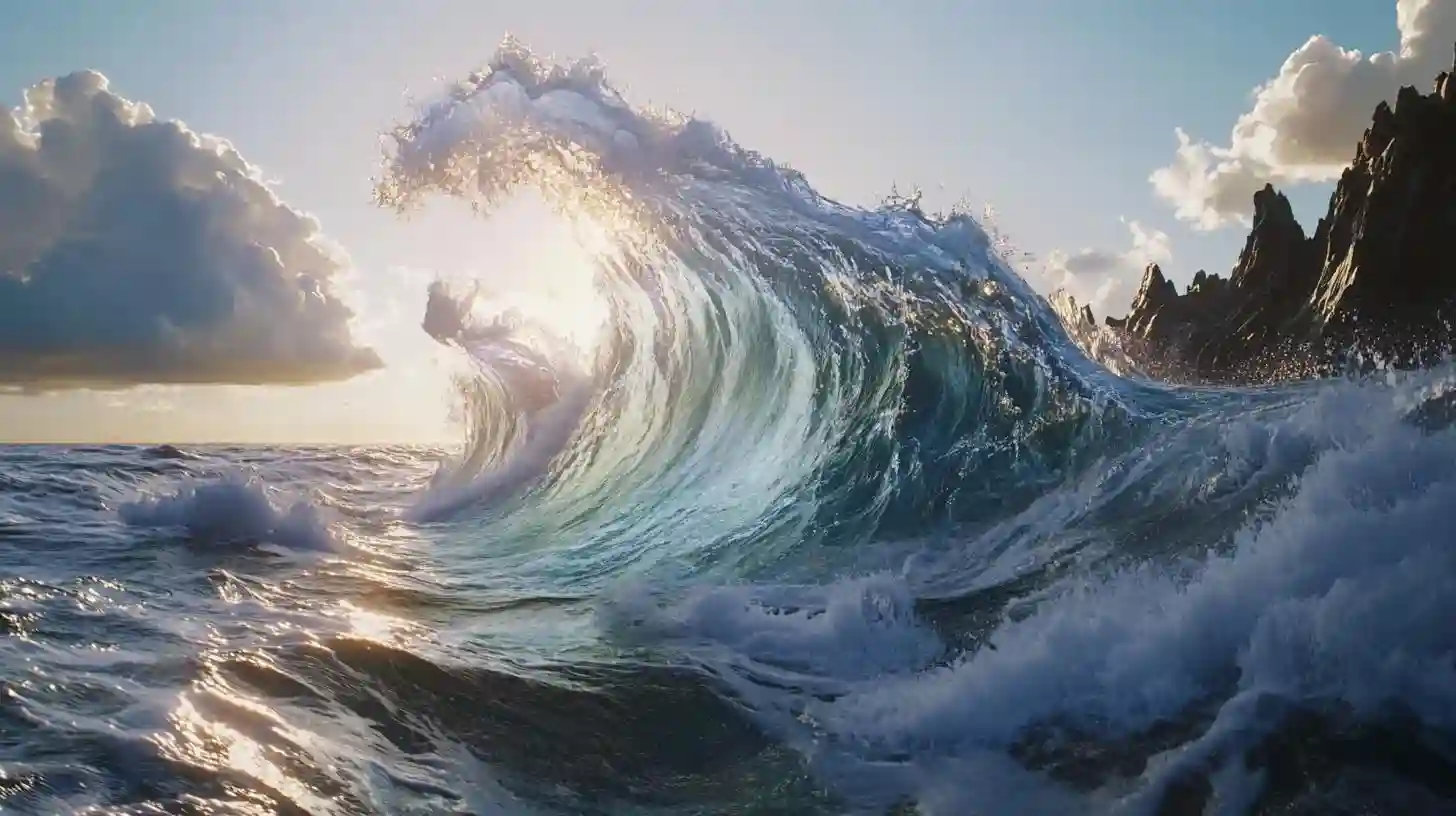
Ocean waves are a magnificent natural phenomenon that has captivated humans since time immemorial. The formation of these waves is influenced by a variety of natural forces, each contributing to their size, shape, and energy. Among the most significant factors are wind, gravity, and the Earth’s rotation, which together create the dynamic and ever-changing seascape we observe along coastlines around the world.
Wind is perhaps the most visible and immediate force that generates ocean waves. As wind blows across the surface of the ocean, it transfers energy to the water through friction. The strength and duration of the wind play crucial roles in wave formation. Strong winds over large expanses of water create larger and more powerful waves. As the wind travels, it ripples the surface, forming small waves called capillary waves. As these waves gain energy and grow, they can transform into larger swells, which are smooth, rolling waves that travel long distances across the ocean.
The relationship between wind and waves is complex, as several factors influence the ultimate size and shape of the waves produced. The fetch, which refers to the distance over which the wind blows across the water, plays a significant role in determining wave height and energy. Additionally, the duration of the wind event is crucial; longer sustained winds can contribute to larger and more organized wave patterns. In areas where strong winds persist, such as during storms or hurricanes, the resulting waves can reach incredible heights, leading to powerful surf conditions that attract surfers and pose risks to coastal communities.
Gravity is the force that governs the behavior of waves once they have formed. As water is displaced by the wind, it rises and falls owing to gravitational pull. This force acts to restore the water's surface back to equilibrium, leading to the wave's characteristic oscillation. When a wave is generated, gravity pulls the water back down, creating a trough as the wave crests. The interplay of gravitational forces results in the cyclical motion of waves, creating continuous motion along the surface of the ocean.
Moreover, the interplay between wind-generated waves and the gravitational pull of the moon and sun creates tidal waves, which are distinct from the wind-driven waves. Tides are primarily influenced by the position of celestial bodies, resulting in periodic rises and falls of sea level. These tidal forces can significantly affect wave conditions in coastal areas, especially in regions with large tidal ranges. In some locations, the convergence of tidal forces with strong winds can create exceptionally high and powerful waves, making these areas popular among advanced surfers and researchers alike.
The Earth’s rotation also plays an important role in shaping wave patterns, particularly the phenomenon known as the Coriolis effect. This effect, resulting from the rotation of the Earth, causes moving air and water to rotate as they travel across the globe. In the Northern Hemisphere, this results in waves and currents that curve to the right, while in the Southern Hemisphere, they curve to the left. This spiral movement has significant implications for oceanic circulation patterns and the distribution of heat, nutrients, and marine life across the world's oceans.
As waves approach the shore and enter shallower waters, they undergo a transformation known as wave shoaling. This interaction between the ocean floor and the waves alters their shape and energy. When waves slow down and gain height due to the decreasing water depth, they can eventually break, producing the foamy surf that is characteristic of coastal regions. The angle at which waves approach the shore affects the way they interact with the coastline, leading to phenomena like rip currents or longshore drift.
Factors such as local geography, wind patterns, and water depth all contribute to the unique characteristics of waves found along different coastlines. For instance, steep coastlines may produce fast-breaking waves ideal for surfers, while gently sloping beaches may favor slower waves that allow for leisurely swimming. These geographic variations help to create a vibrant and diverse marine environment that sustains a wealth of biodiversity.
Beyond their mesmerizing beauty, ocean waves also play a vital role in shaping coastal ecosystems and influencing human activity. Erosion, sediment transport, and nutrient mixing are all driven by the movement of waves, making them essential to the functioning of marine and coastal ecosystems. For communities situated along the coastline, understanding the forces that generate and shape ocean waves is crucial for managing resources, preparing for natural disasters, and ensuring the safety of both people and property in these dynamic environments. The forces behind wave formation are a testament to nature's power and complexity, inviting ongoing exploration and admiration from all who encounter the boundless sea.